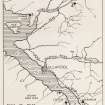Pricing Change
New pricing for orders of material from this site will come into place shortly. Charges for supply of digital images, digitisation on demand, prints and licensing will be altered.
Upcoming Maintenance
Please be advised that this website will undergo scheduled maintenance on the following dates:
Thursday, 9 January: 11:00 AM - 3:00 PM
Thursday, 23 January: 11:00 AM - 3:00 PM
Thursday, 30 January: 11:00 AM - 3:00 PM
During these times, some functionality such as image purchasing may be temporarily unavailable. We apologise for any inconvenience this may cause.
An Dun, Dreinach
Dun (Period Unassigned)
Site Name An Dun, Dreinach
Classification Dun (Period Unassigned)
Alternative Name(s) Strath Canaird; River Kanaird
Canmore ID 4528
Site Number NC10SE 1
NGR NC 1653 0196
Datum OSGB36 - NGR
Permalink http://canmore.org.uk/site/4528
- Council Highland
- Parish Lochbroom
- Former Region Highland
- Former District Ross And Cromarty
- Former County Ross And Cromarty
NC10SE 1 1653 0196
(NC 1653 0196) An Dun (NR)
OS 6" map, (1969)
An Dun, 300 yds SE of the River Kanaird and 700 yds due E of Drienach, occupies the flat-topped summit of a rocky knoll lying in the angle formed by the confluence of two burns. The knoll is precipitous or steeply inclined and the only easy approach to the dun is from the S where a gap in the debris probably represents the site of the entrance. Owing to the wasted condition of the remains, no useful plan can be made without excavation. Superficial indications, however, suggest that the structure was shaped like a squat letter D with rounded corners, the W side forming the upright stroke, and that it measured about 34' E-W by 32' N-S within a wall some 14' thick. At the NW corner a short segment of the outer face of the wall is visible, a few courses high, behind which two slabs, embedded in the soil, may indicate the presence of a chamber. Another stretch of the same face, 10' long, can be seen on the straight W side, rising with a batter of 1'6" to a height of 6'6"; its top is approximately level with the present ground surface in the interior. It is built of large blocks of local freestone levelled and jointed with pinnings. Elsewhere the walling has either disappeared over the precipices or lies in a heap of debris on the upper slopes of the knoll. Natural erosion has no doubt been accelerated by stone-robbing to build a late cottage and a dyke at the foot of the approach on the S. It is probable, however, that the foundations and floor are still intact.
C Calder and K Steer 1951.
The dun is defended on the moor side by an adjoining wall immediately to SE. Further protection is given by an outer rampart and ditch enclosing a large area. It runs from a burn to the S of the dun in a straight line for about 65 yds to form a rough right angle with another short rampart from a burn on the N. Where the two ramparts meet there is a slight projection towards the moor. The top of the rampart is about 6' above the bottom of the ditch.
D J R le Noble 1969.
'An Dun' - A dun generally as described by Calder and Steer (C Calder and K Steer 1951) , though it is not really D-shaped. The outer face is well-preserved in the W and SW and another frag- ment can be seen in the NE. There are also traces of the inner face, giving a wall thickness of about 4.6m. It is doubtful if the two stones noted by Calder and Steer as indicating a chamber represent such a structure and there is nothing elsewhere to suggest intra-mural features. The alleged outer defences noted by Noble (D J R le Noble 1969) are recent dykes.
Visited by OS (J M) 10 July 1974.
D J R le Noble 1969.
Measured Survey (October 1947)
Following the report of an unrecorded vitrified fort at Dun Lagaidh, Ullapool, in October 1947 Kenneth Steer and Charles Calder, RCAHMS, surveyed the site, together with a number of monuments in the vicinity.
Source: C S T Calder and K A Steer 1951
























